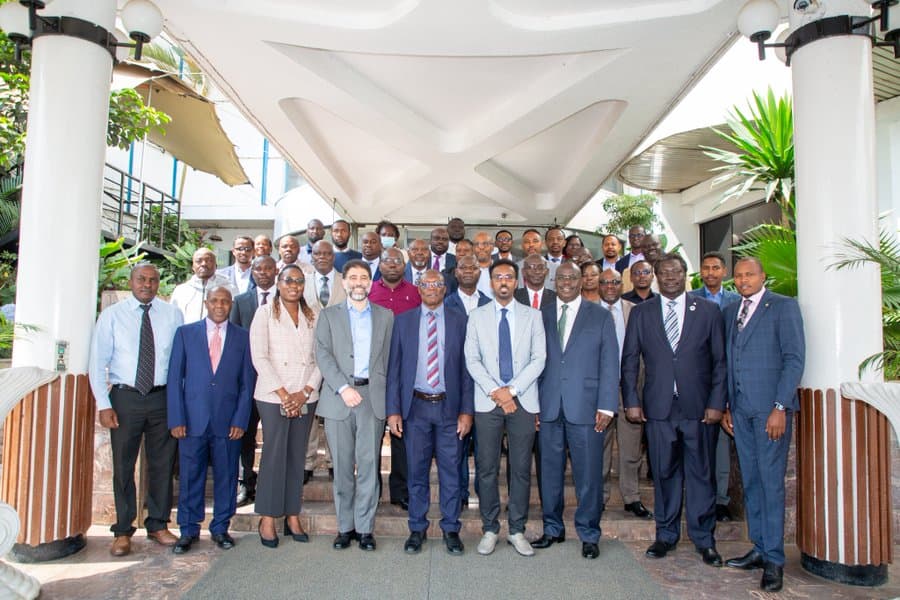We're loading the full news article for you. This includes the article content, images, author information, and related articles.
East African Community member states endorsed a 10-year biotechnology strategy to harmonise policies, boost innovation and protect biodiversity, with Kenya’s biosafety authority playing a key role and the plan aligning with global frameworks.

EASTECO’s regional plan (2026–2036) aligns with global agendas and harmonizes biosafety for equitable biotech growth.
Nairobi, Kenya – August 13, 2025
Delegates from Kenya and partner states in the East African Community (EAC) approved a landmark 10-year biotechnology strategy spanning 2026 to 2036 during a validation workshop held in Nairobi. Crafted by the East African Science and Technology Commission (EASTECO), the plan seeks to harmonize biotech policies across the region while fostering innovation, protecting biodiversity, and ensuring equitable access to biotechnology benefits.
EASTECO—a regional EAC institution—is mandated to promote and coordinate science, technology, and innovation to support regional integration and socio-economic progress.
The strategy mirrors global and continental frameworks, aligning with the UN 2030 Agenda, Africa’s Agenda 2063, and the EAC Vision 2050, while incorporating international protocols such as the Cartagena and Nagoya agreements on biosafety and biodiversity.
Policy Harmonization: Establishes unified biotechnology regulations across EAC member states.
Kenya’s Role:
NBA Contributions: Kenya’s National Biosafety Authority (NBA) plays a crucial drafting role. Acting Director Josphat Muchiri affirmed Kenya’s comprehensive regulatory framework—covering GMOs’ contained use, environmental release, labeling, and guided risk assessment procedures.
Ethical Governance: Includes provisions for public participation, ethical debates around gene editing, synthetic biology, AI, and equitable benefit-sharing.
Biosecurity Safeguards: Establishes regional standards to guard against misuse and biothreats.
Economic Gains: The strategy promises to boost regional trade, innovation, and public confidence in biotech.
Leadership & Capacity Building: With Kenya at the helm, EAC countries can ramp up regulatory alignment and support lagging states in biotech adoption.
Reputation & Integration: If implemented fully, this strategy positions East Africa as a global leader in responsible biotechnology development.
EAC’s broader ambitions in science policy include rolling out approaches such as the regional Bioeconomy Strategy and STI (Science, Technology, Innovation) policy frameworks.
Under the EAC Vision 2050, the region targets higher per capita income and development through strategic collaborative innovation.
Implementation Phases: A collaborative roadmap will guide the rollout across EAC countries.
National Regulation Upgrades: Member states must align domestic biosafety frameworks with the new strategy.
Awareness Campaigns: Public participation and trust-building processes will accompany the rollout.
Monitoring & Evaluation: Ongoing stakeholder engagement will be key to ensure progress and accountability.
East Africa’s new biotechnology blueprint signals a strategic shift—from fragmented policy landscapes to harmonious regulation and shared innovation. With Kenya spearheading the effort, the region now has the roadmap and momentum to unlock biotechnology’s vast potential—ethically, sustainably, and equitably.
Keep the conversation in one place—threads here stay linked to the story and in the forums.
Other hot threads
E-sports and Gaming Community in Kenya
Active 7 months ago
Popular Recreational Activities Across Counties
Active 7 months ago
The Role of Technology in Modern Agriculture (AgriTech)
Active 7 months ago
Investing in Youth Sports Development Programs
Active 7 months ago